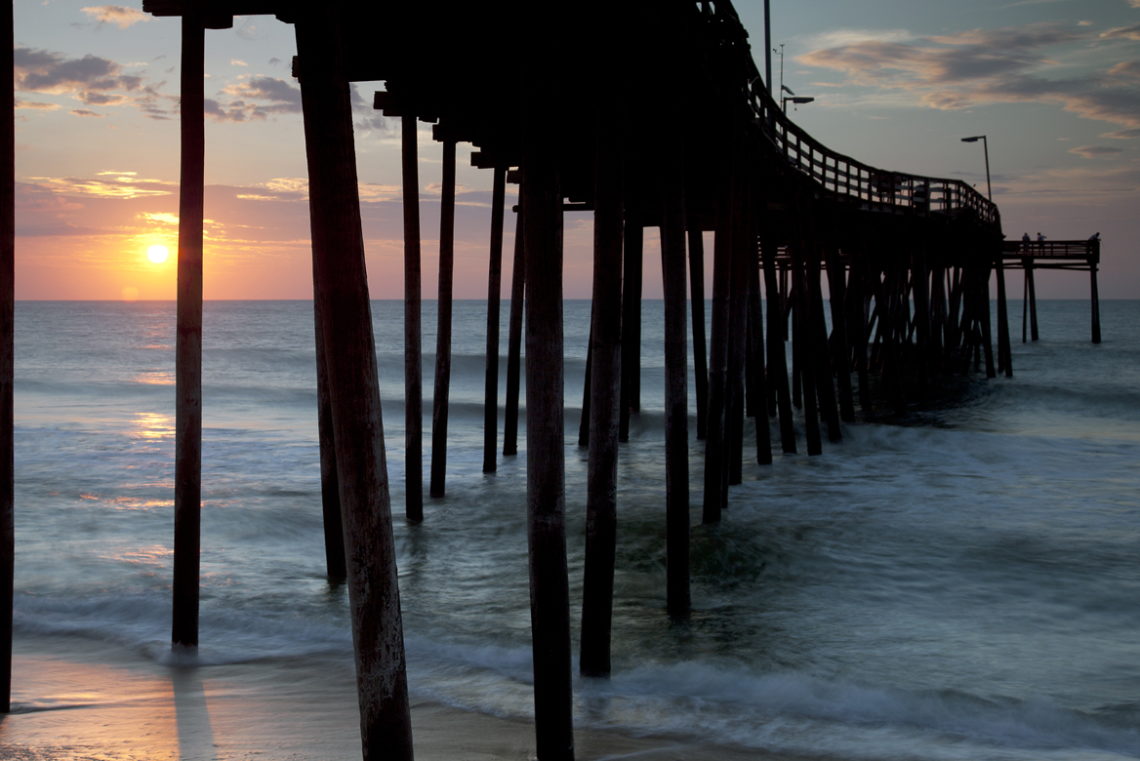
The central Coastal Plain is a region of contrasts. From colonial capitals to thriving beach resorts to bustling metropolitan areas, the region has something for everyone.
Somerset Place and Pettigrew State Park take visitors back to antebellum days with a detailed and sometimes disturbing look at North Carolina's largest plantation. Josiah Collins' rice plantation once held over 300 slaves. Neighboring Pettigrew State Park lines the shores of Lake Phelps, one of several fresh water lakes that dot the landscape.
South of there, Lake Mattamuskeet National Wildlife Refuge offers wildlife lovers an incredible view of thousands of species of waterfowl that migrate to the lake every winter. The Lake is the largest in the state, although it is only three feet deep.
In the quaint riverside town of Belhaven, visitors can experience the quirky at the Belhaven Memorial Museum. Exhibits are comprised of every oddity ever uncovered by citizens of this small town, from a circus of fleas to two-headed pigs.
Ten miles east on the north shore of the Pamlico River lies Bath Town State Historic Site. As the oldest incorporated town in North Carolina, this river town was once the colonial capital and home to Blackbeard the Pirate. Today, many of the town's homes are restored and open for tours.
Nearby Goose Creek State Park is an excellent example of a flood plain ecosystem. Camping and boating opportunities abound in this quiet pristine river environment.
On the south side of the Pamlico River, the Aurora Fossil Museum takes advantage of PCS Phosphate's nearby mining operation and displays the ancient remains of maritime creatures. Shark's teeth up to six inches long strike terror into the hearts of hundreds of school children every year.
At the confluence of the Neuse and Trent Rivers, Historic New Bern is one of North Carolina's most beautiful towns. The third of the state's colonial capitals, New Bern appears today much as it did 200 years ago, with a beautifully restored historic district. The centerpiece of the city is the magnificent Tryon Palace and Gardens, the regal home of North Carolina's royal governor prior to the revolution. Meticulously rebuilt to its original glory, the Palace is open for guided tours year-round.
Contrast the stately streets of New Bern with pine-littered trails of the Croatan National Forest just south of town. This arid coastal park is characterized by open stands of long leaf pine and gentle sandy hills called hammocks.
Next stop, the atmospheric restored colonial port town of Beaufort State Historic Site. The port town boasts one of the best-restored waterfronts in the southeast, complete with a state-run Maritime Museum and boat building Museum, shops, and restaurants. Or take a moment to stroll through the Historic District, with homes dating back to the early 1700s.
Then head "Down East" to Harker's Island, where the natives still speak with an accent reminiscent of their Elizabethan ancestors called a "High Tide" dialect (say Hoigh Toighd). Visit the Harker's Island Decoy Museum, which features hand-carved wooden decoys that qualify as fine art.
Bogue Banks separate the mainland from the ocean along the coast here, and visitors will find many things to keep them occupied. At the eastern end of the island, Fort Macon State Park is the most visited of North Carolina's state parks. The centerpiece of the park is a stone fort that has guarded strategic Beaufort Inlet for 200 years and was the scene of a fierce land and sea battle in 1862. To the west, visit the NC Aquarium at Pine Knoll Shores. Featuring dozens of tanks of exciting marine life and maritime forest trails, the Aquarium is a must-see.
Bear Island and Hammock's Beach State Park are adjacent to Bogue Banks. This pristine island is accessible only by boat but is worth the trip in the summer when loggerhead turtles can be observed laying eggs on the wide sandy beaches.




